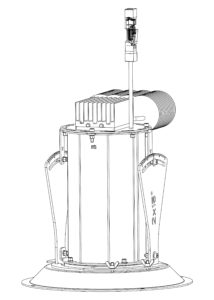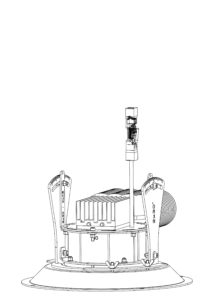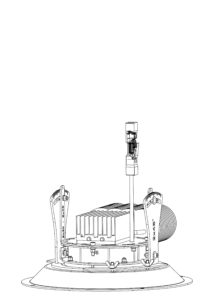Leipzig
About the Project
The Gewandhaus zu Leipzig concert hall was inaugurated in 1981 and is one of the cultural institutions of the city of Leipzig. It is home to the well-known Gewandhaus Orchestra, as well as other musicians and ensembles.
Since the last renovation of the hall illumination was carried out 30 years ago, the lighting was now technically and ecologically outdated. The first thing to be done was to renew the concert lighting in the Great Hall in accordance with the wishes of the Gewandhaus Orchestra: the orchestra podium as the centre of the hall is illuminated by warm light, while the entire audience seats in the stands and in the stalls remain in darkness during the concerts, as well as the entire ceiling. So, the audience is able to experience a concentrated musical enjoyment without distraction. A specially tailored control system also makes it possible to set different lighting scenes and focus the light on individual areas of the podium – for example on the desk.
For this purpose, the new, specially developed LED reflector luminaires were mounted in the existing ceiling recesses. They are rotatable and swiveling, and they are set further back inside the recesses to avoid distracting light phenomena such as glare and light haze, and to ensure optimal lighting conditions for the musicians on the podium to read and make music. An important aspect was that the lights were flicker-free in order to avoid headaches and lack of concentration for the musicians as well as problems during filming. Despite an illuminance of 800 – 1000 lux, the light appears warm and gentle due to its colour temperature of 3000 Kelvin.
The Project in Numbers
Phase of construction
Luminaires
Luminaire types
Visual
Johanna Brause wrote in the Gewandhausmagazin Nr. 109 about this project; we quote the following passages with the kind permission of the editors:
Bright, warm and flicker free
»
Plans for a redesign of the concert stage illumination began almost 20 years ago, but it was not until 2016 that concrete initiatives could be taken. […] For the new lighting design of the Great Hall, the Gewandhaus was able to win Conceptlicht GmbH from Traunreut, which has already been awarded the German Lighting Design Prize several times. […] In this year’s first construction phase, the Franconian company »LMT Leuchten + Metall Technik GmbH« implemented the plans of Conceptlicht for the podium lighting. […]
It is the second time since the inauguration of the Gewandhaus 39 years ago that the podium lighting in the Great Hall has been renewed. The first time this happened in 1992. However, due to the lighting innovations that have been available since then, the lighting system has long since ceased to meet the minimum technical and ecological requirements for the illumination of a concert stage. Quality deficiencies were felt equally by the audience and the orchestra. The scattered light, which was disturbing for the visitors, was not limited to the illumination of the podium, but also illuminated the ceiling of the hall in addition to large parts of the seating areas. On the other hand, there was no uniformly good lighting for all orchestra members. […] “It was sometimes too dark for the brass players to be able to recognize the notes perfectly. As a result, we had to switch on a lot of auxiliary lights that were not part of the stage lighting and had to be attached to the sides. Unfortunately, these luminaires had a quite wide light beam and illuminated large parts of the audience areas on the organ and the two orchestra galleries. But it is very unpleasant for the audience to sit in such a bright light.”
The illumination of 1992 was neither dimmable nor could it be focused. It included metal halide lamps, which work in a similar way to street lighting. “After being switched on, these lamps need a certain amount of time to get hot and therefore brighter. They then change the color a little from green to warm light. If you switch it off, you have to wait for them to cool down before you can turn it on again,” says Rudolph, a master electrical engineer, describing how it works. This type of lighting was completely unsuitable for scenic purposes. “With the new lighting, for example, at a ceremony, if the orchestra remains seated on the podium during the speeches, you can hide the musicians and focus only on the lectern.” […]
The team around [Conceptlicht] boss Helmut Angerer created a concept that was adapted to the conditions of the 40-year-old hall. The first main objective was to achieve lighting that was as homogeneous as possible, with a narrow beam that encompassed all areas of the stage. “It was important to us to create many very uniform points of light in order to avoid shadows on the music sheets and instruments as much as possible. To do this, we used swivel and rotatable luminaires,” says Jan Nielsen. Furthermore, we wanted to design the light reflected in the room in such a way that the perceived light energy is most effective for musicians and audience. The registered image should be prepared for viewing, so to say.” In line with these intentions, the lighting designers created a theatrical atmosphere: the auditorium is lit only by the reflection of the podium. The musicians are placed as if on a stage, the audience experiences the action from the darkness without disturbing points of light.
In contrast to the concert hall in Dresden’s Kulturpalast, which was completely modernised, the Conceptlicht designers in the Gewandhaus reused the original positions of the luminaires and adapted them to their lighting ideas. Of course, light intensities can be used to evoke meanings,” explains Jan Nielsen. The eye is always drawn to the brightest points of light. In the previous lighting, there was a lot of light on the ceiling, but there is no relevant viewer information on it. As a result, this ceiling illumination was perceived as disturbing by musicians and audiences alike.« […] In order to reduce the wide cone of light on the ceiling of the hall, the lighting engineers moved the luminaires as far back as possible into the shafts of the existing ceiling openings while maintaining the original lamp positions. “This process has reduced what we call ’visual ballast’: disturbing or unnecessary radiation and excessively high luminances,” says Jan Nielsen. Another focus, the interior designer continues, was the non-lighting of the first rows in the audience areas. In order to protect visitors from glare, it was necessary to ensure that the light from the luminaires had a sharp transition. This was achieved by using an LED lighting system with reflector technology. […]
For this reason, special reflectors have been manufactured by LMT GmbH for [the] new podium lighting. In a very simple, neutral appearance, these luminaires are designed to “avoid superfluous visual information”. […] And they are intended to help save energy for the benefit of ecology and economic efficiency. Initial estimates assume 75 percent less energy consumption per year compared to the old lighting, which would correspond to an annual emission saving of around 77 tons of carbon dioxide – despite the comparatively high illuminance of 800 to 1000 lux. […] “Nevertheless, the luminaires do not produce gleaming white, cold light, but rather the colour temperature of 3000 Kelvin that we want,” reports Jörg Rudolph. […]
According to Jörg Rudolph, the new illuminance of up to 1000 lux ensures optimum legibility of the notes. “In any case, it is sufficiently bright, especially in the problematic areas I measured up to 800 lux. It’s not easy to achieve this illumination level on the inclined desks.” All the more reason for the Gewandhausmeister to pay tribute to the executing employees of LMT as well as to the planners of Conceptlicht. In the end, its interior designer Nielsen does not forget to point out that the new podium lighting is “flicker-free”, i.e. the light does not flicker. For example, non-flicker-free lighting can cause headaches, discomfort and lack of concentration for musicians and audiences and lead to mental stress. The flickering is also problematic for film and television cameras.
Gewandhaus director Schulz is all the more pleased that these problems are now a thing of the past: “[…] Everyone benefits from this: the musicians, the audience, the media producers and, last but not least, the technicians of our company. A real added value for everyone involved.«
«
Applied Products
CL .2 | 2x 15° | 4235-800
- LED downlight with CL2 reflector 2×15° and sharp cut-off
- Light colour 3000 K, CRI 95+, 4500 lm
- Designed as a single luminaire and also with passepartout as a double- tripe- and quadruple group, adjusted to the existing recesses
- Variant for safety illumination
- Each single luminaire is rotatable and swiveling for optimum illumination
- With Dali control
- Project-specific colour coating
CL .4 | 2x 30° | 4235-820
- LED downlight with CL4 reflector 2×30° and sharp cut-off
- Light colour 3000 K, CRI 95+, 4500 lm
- Designed as a single luminaire and also with passepartout as a double- tripe- and quadruple group, adjusted to the existing recesses
- Variant for safety illumination
- Each single luminaire is rotatable and swiveling for optimum illumination
- With Dali control
- Project-specific colour coating
CL .5 | 2x 45° | 4235-830
- LED downlight with CL5 reflector 2×45° and sharp cut-off
- Light colour 3000 K, CRI 95+, 4500 lm
- Designed as a single luminaire and also with passepartout as a double- tripe- and quadruple group, adjusted to the existing recesses
- Variant for safety illumination
- Each single luminaire is rotatable and swiveling for optimum illumination
- With Dali control
- Project-specific colour coating
Project Partners
Architect
Ulrike Kabitzsch
Leipzig
Lighting Designer
Conceptlicht GmbH
Traunreut
Client
Gewandhaus zu Leipzig
Institution of the City of Leipzig




